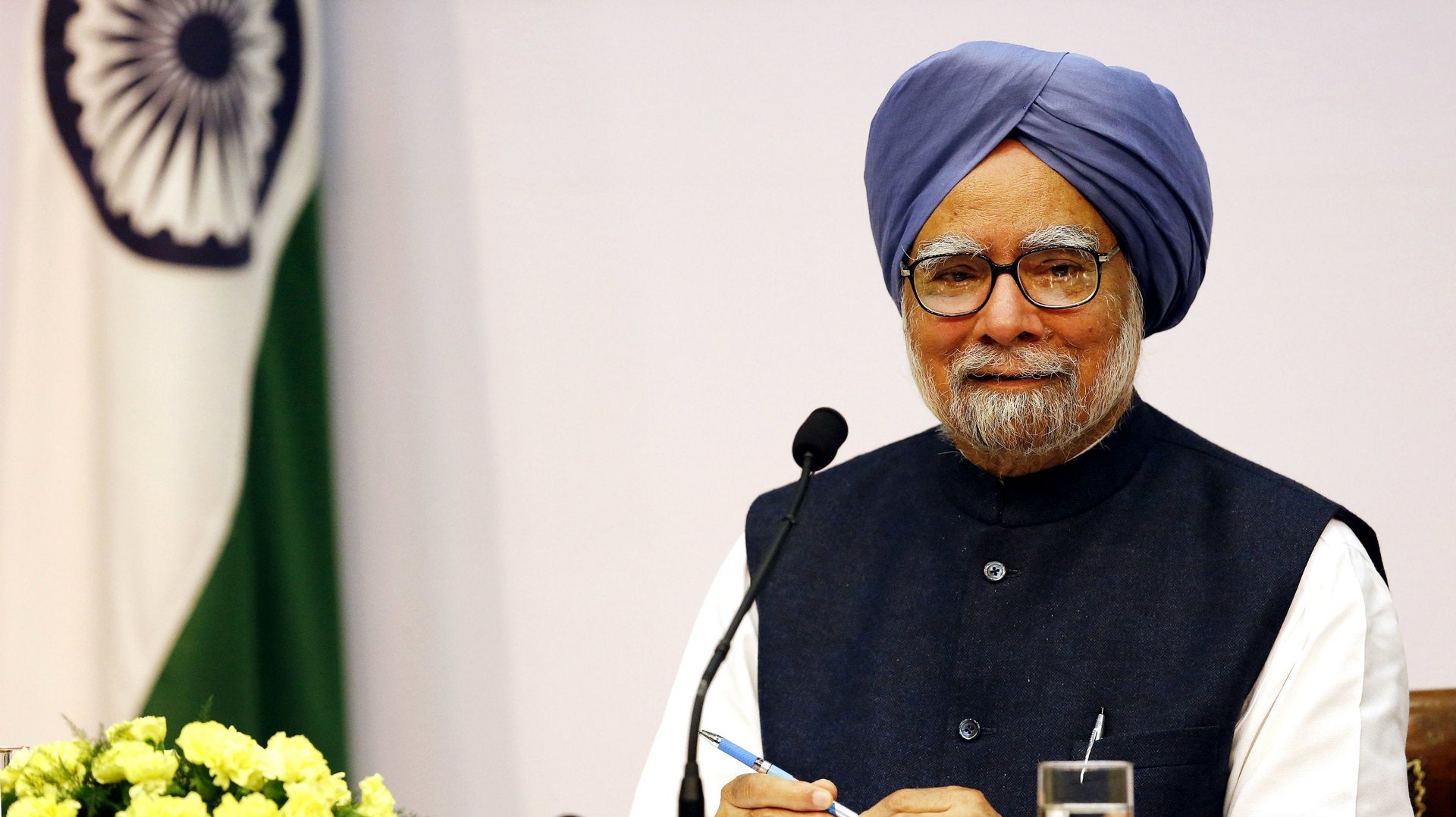Fact-checking Indian PM Manmohan Singh’s retirement speech
Indian prime minister Manmohan Singh said today he will not seek a third term, and will “hand the baton” to a new prime minister, one he “hopes” is selected by the Congress Party-led United Progressive Alliance after this year’s general election.


Indian prime minister Manmohan Singh said today he will not seek a third term, and will “hand the baton” to a new prime minister, one he “hopes” is selected by the Congress Party-led United Progressive Alliance after this year’s general election.
The announcement was a not-unexpected development for the 81-year-old, who has become noticeably less enthusiastic over the course of his nearly ten-year tenure. Still, the speech marks an important historical milestone for the man who helped drive India’s economic policy for more than two decades. And, as it was given during the prime minister’s third press conference ever, it’s likely to be one of the last public utterances from the Oxford-educated economist known for his Coke-bottle glasses and effacing manner.
A former reserve bank governor, Singh first burst on to the national and international stage in 1991 as finance minister, proclaiming “India is now in a new ball game,” (paywall) as he pushed a country teetering on the brink of financial collapse away from socialism and towards foreign investment and a free market economy. Unexpectedly asked to be prime minister in 2004 after the Congress Party’s surprise victory, he presided over India’s roaring growth in the years from 2005 to 2009, before a combination of corruption scandals, bureaucratic inertia and lack of investor confidence sent India’s economic growth rate plummeting, and with it Singh’s reputation.
“That Manmohan Singh’s star has fallen, and far, may be the closest thing to a consensus in Indian politics today,” Caravan magazine wrote in a massive profile of Singh in 2011 that summed up his downfall. “The man who helped steer India through its most perilous financial crisis and into an age of explosive growth—whose image has always been that of a swift, purposeful manager, too busy solving problems to play political games and preen for the cameras—now appears as a technocrat in way over his head…”
It was hard not to hear the echo of great hopes, and the disappointing reality in Singh’s retirement speech today. While full of sweeping, laudatory statements, it was short on substance and contained a number of proclamations that, on further examination, don’t quite hold up. We’ve taken a closer look below. You can read his full speech here, and please feel free to add your own annotations and suggestions if we’ve missed anything.
“We have transformed the education landscape of our country.”
Not really. India’s 2011 literacy rate of 74% was just 9.2 percentage points higher than it was in 2001, according to the national census, the latest figures available. While the momentum is in the right direction, one out of three girls over the age of seven remains illiterate. Encouraging girls to go to and stay in school, a focus of Singh’s, has not been an unmitigated success. Primary school enrollment rates for girls increased substantially from 2002 to 2009, but dropout rates in between primary and secondary school remain high.
“The Mahatma Gandhi National Rural Employment Guarantee Scheme has assured agricultural labor of a floor and has increased their bargaining power.”
NREGA has been a cornerstone of Singh’s time in office since its 2006 launch; it now employs some 53 million people. It has been derided for everything from causing corruption to poor building quality, and there a debate about whether it has increased rural wages overall, but it has improved the “income level, purchasing power, life style and living standard” of the people participating, studies like this one from Sardar Patel University (pdf, pg. 180) found.
“The number of people below the poverty line has come down by 138 million.”
It depends on how you measure it. Singh’s statement is accurate under the controversial “Tendulkar method” of defining poverty—but the government was forced to effectively abandon that that metric two years ago after groups across the political spectrum criticized its accuracy. India’s most recent Planning Commission report said there were 269.3 million Indians living in poverty in 2011-2012—down 32.4 million from the beginning of Singh’s term according to one measure (pdf, pg. 4), or up 30.8 million according to another (pdf, pg. 5).
“History will be kinder to me than the contemporary media and the opposition parties in Parliament.”
This is probably true. The frustration that many felt with Manmohan Singh seemed to stem from the unfulfilled promise of what people felt he could achieve, rather than what he actually did.